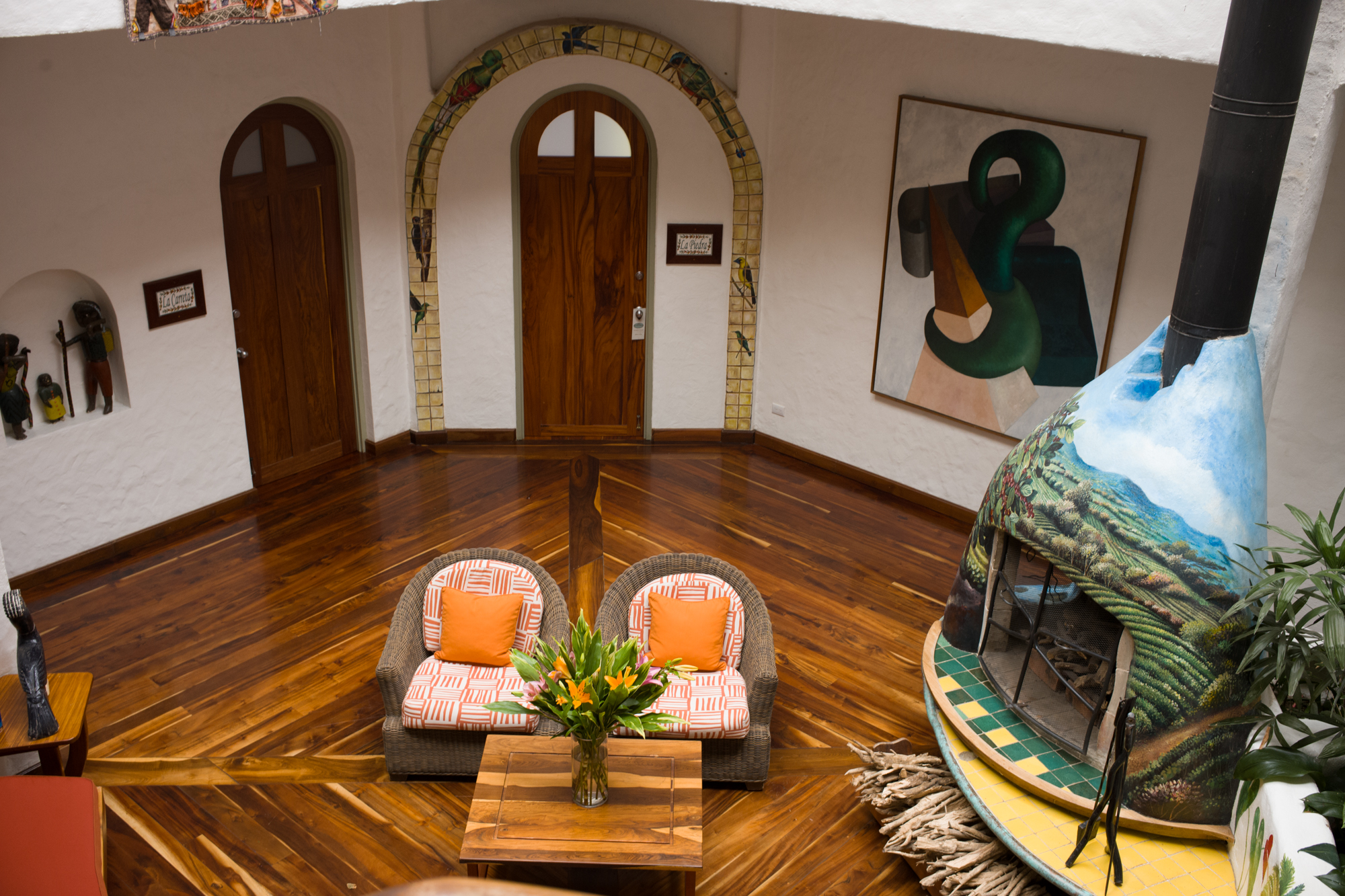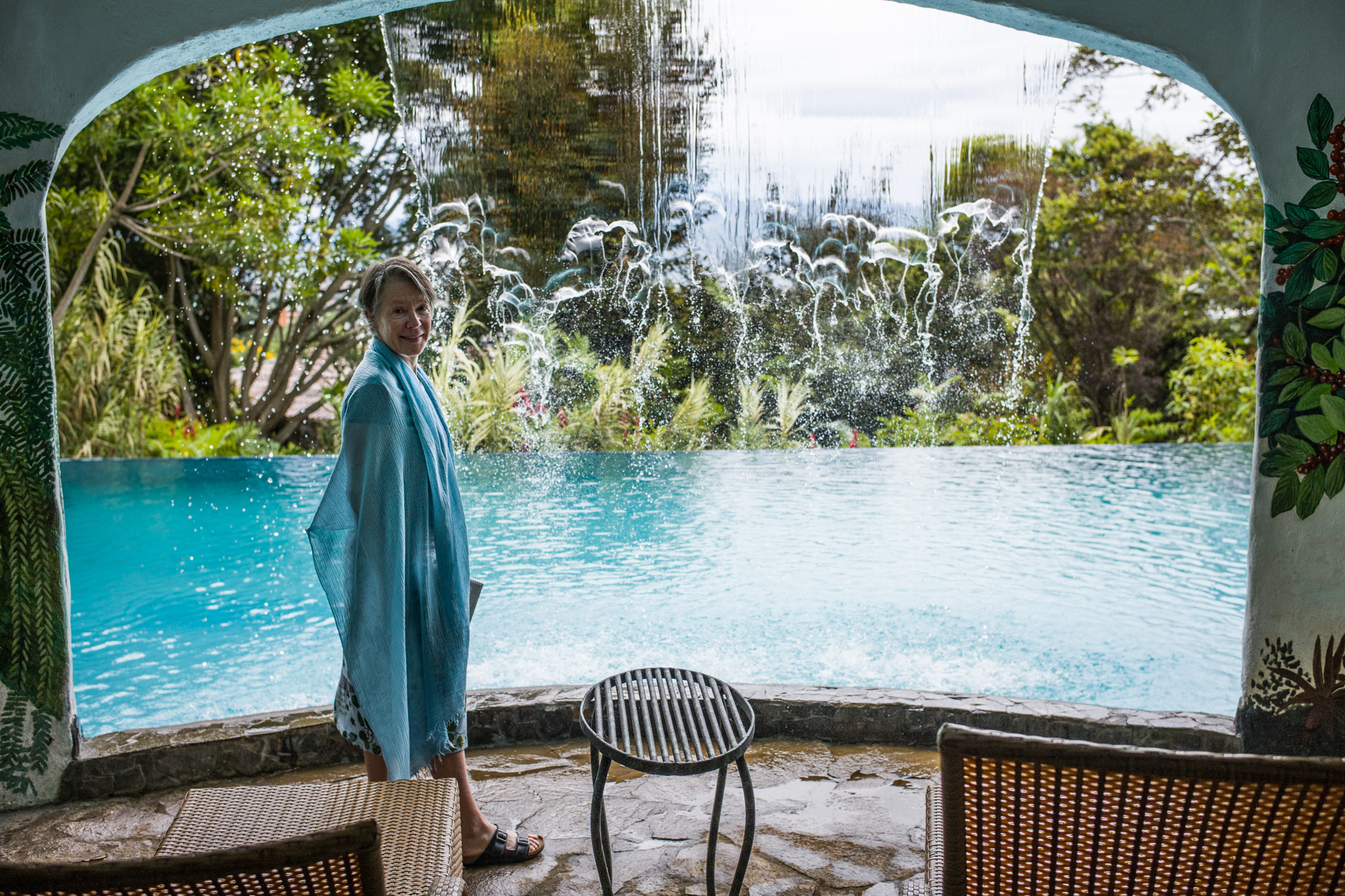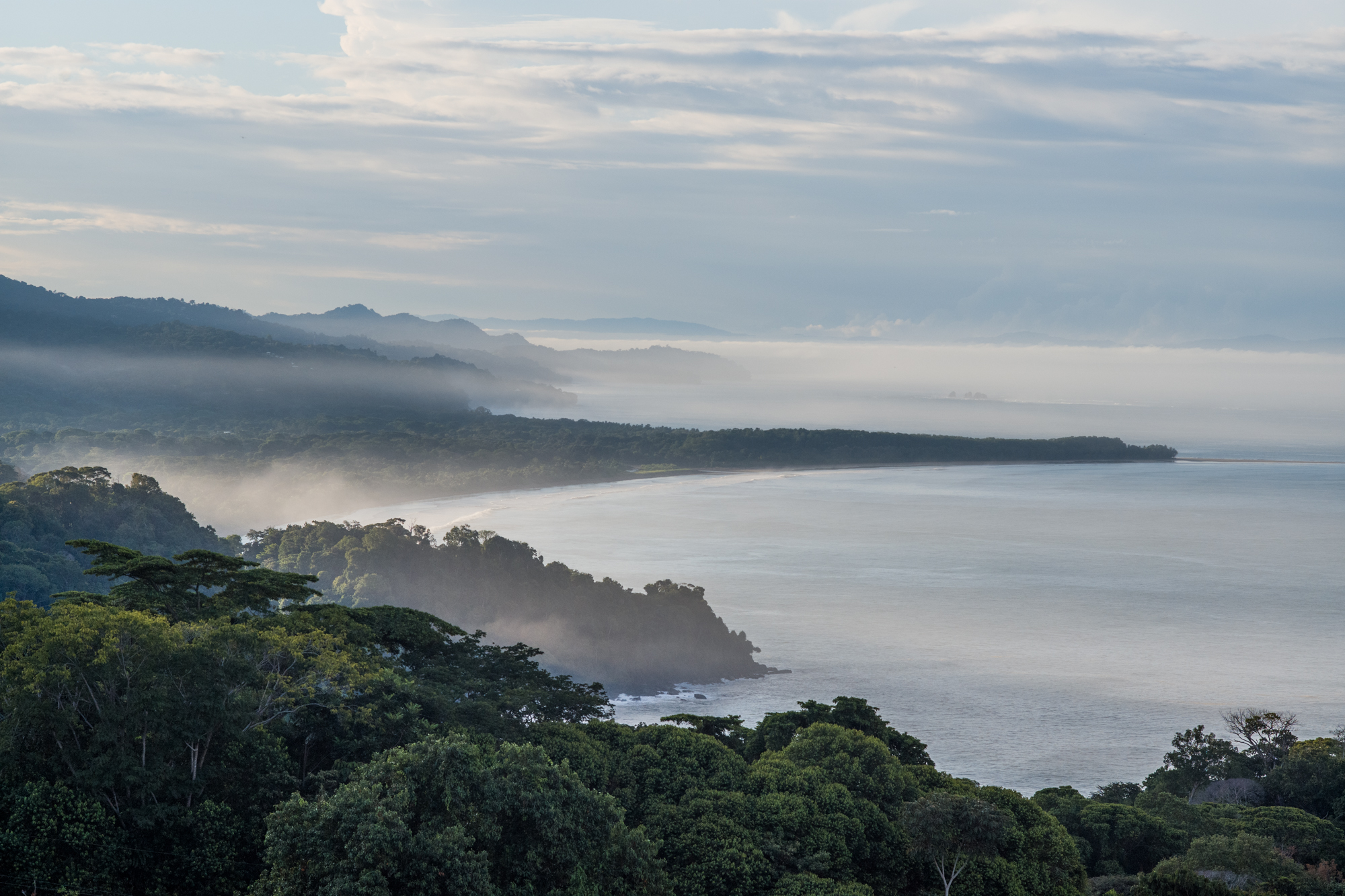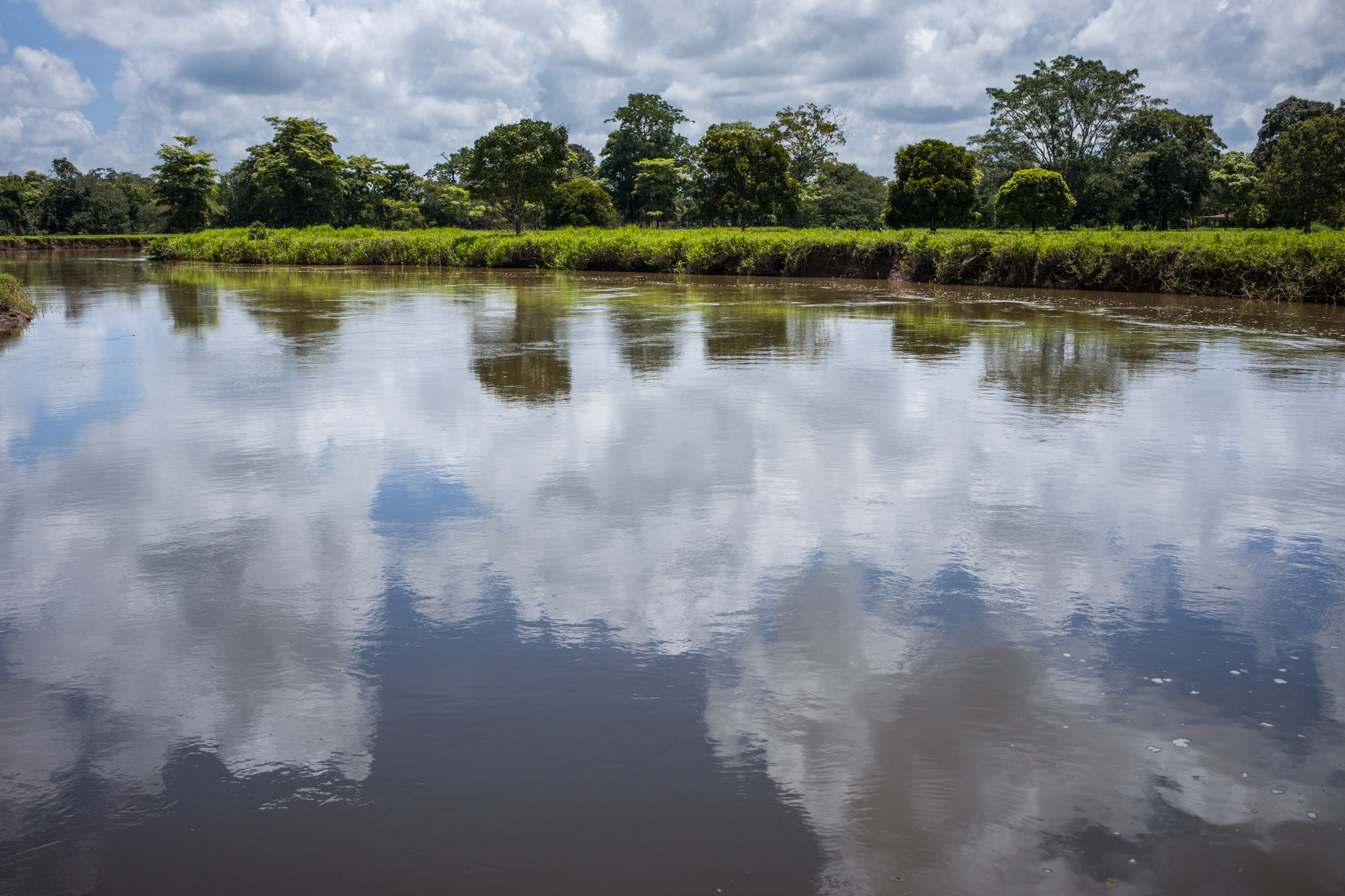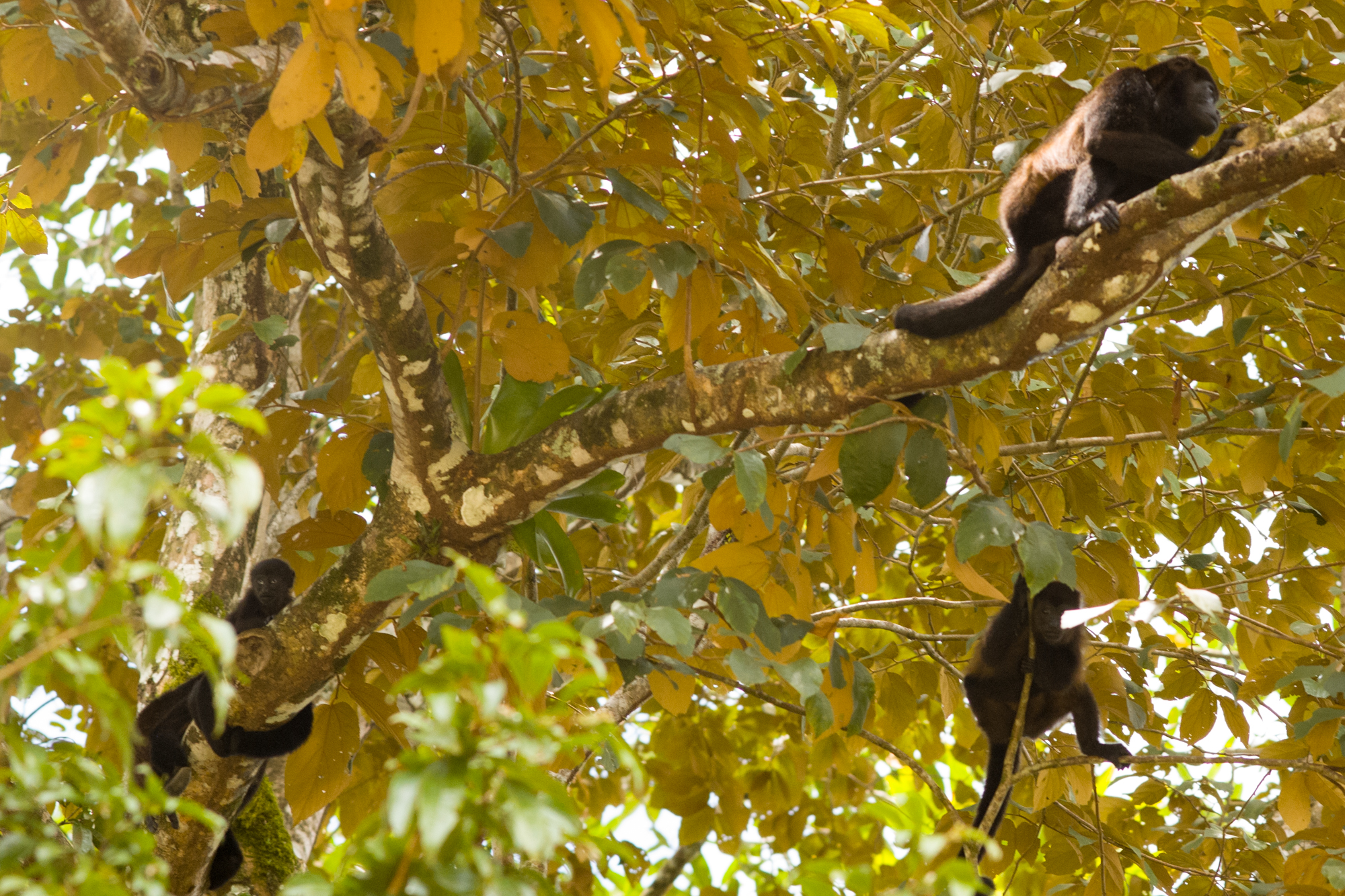Costa Rica is Pura Vida!
“It is that range of biodiversity that we must care for - the whole thing - rather than just one or two stars.”
The view from above Playa Dominical
Watching leaf cutting ants is hypnotic
Howler Monkeys in the rainforest
Baby sea turtle walking to the Ocean for the first time
The fractal patterns of the rain forest canopy backlit by the tropical sun
The Rich Coast
Legend has it that Costa Rica got its name from Columbus who believed he discovered the land of gold and silver. The “Rich Coast” stuck even though Columbus was wrong about the gold. This land is rich with beautiful beaches along the Pacific and Caribbean coastlines, mountains, active volcanoes, lush rain forests and astounding biodiversity. Watch Capuchin monkeys swing from tree vines and sloths dangle lazily in the forest canopy. Ocean waves crash untouched beaches and vibrant green jungles await exploration. Ocean waves crashing onto untouched beaches. The landscape of Costa Rica is a verdant natural playground awaiting exploration.
We explored the Pacific beach town of Playa Dominical (about 50 miles south of Quepos) as well as the inland area around Volcano Arenal. Our adventure started in the capital city of San Jose.
Beautiful plants on this Rich Coast
San Jose
San Jose is home to around 300,000 people and the population of Costa Rica is about 5 million. The Finca Rosa Blanca Resort located on the outskirts is an oasis of tranquility as well as a certified organic coffee producer. The original plantation house was converted to private hotel with an outdoor bar and restaurant that serves local cuisine. Venture out on the self guided hiking trail that meanders through the coffee plantation and gardens. The complex rests above the town and is a 30 minute ride from the airport. The hotel provides pick up/drop off service and the front desk arranges day trips into the city, surrounding villages, open air markets and museums. TIP - Driving is possible in Costa Rica but do not attempt your first excursion at night because some neighborhoods don’t have street lights and the roads tend to weave or abruptly dead end.
Waterfall and pool at Finca Rosa Blanca
A sitting room in Finca Rosa Blanca
After a good night’s sleep, take a guided trip to San Jose and to the village of Barva where local craftsmen continue the tradition of mask making for village festivals. Barva is a colonial town founded by the Spaniards in 1561 and it’s roots are deeply embedded in its traditions, one of which are masks. Every August 24th, there is a celebration dedicated to the patron saint Saint Bartholomew where the locals wear masks and hit each other with cow bladders. These large and colorful masks are an important part of the local culture. Each mask in Barva is unique. Since the process is labor intensive, the masks are stored so that they can be used for several years.
The market in San Jose
Masks in Barva shop
A Retreat in the Jungle - Playa Dominical
Getting from San Jose to Quepos takes about 30 minutes by plane. The flight provides an overview of the rain forest, mountains and coastline. In Quepos we rented a car and drove to our rain forest home outside of Playa Dominical. Tip - Do not rent for the cheapest ride. Instead rent a rugged 4 wheel drive vehicle and heed the numerous warnings about driving through streams! Some roads are not paved and if there is a washout, you don’t want your car to get stuck in the mud. Even if you don’t plan to go “off roading” having a rugged vehicle may prove useful.
Our Third Home House was located a couple miles up a dirt road high in the Rain Forest overlooking the Pacific Ocean. The Jolly Roger Bar is within walking distance and claims to have the best chicken wings in Costa Rica!
The infinity pool quickly became our favorite room which we enjoyed throughout the day. We watched the setting sun over the Pacific and spotted colorful Toucans swooping through the rainforest that surrounded us. The sounds of the rainforest are intense and hypnotic. The elusive Howler Monkeys and birds of all kinds battle for audio supremacy during the afternoons. The rain forest is alive.
A 3 toed Sloth snoozing in the canopy
Worth a visit:
Manual Antonio National Park is a tropical paradise on the Pacific Coast and claims to have one of the top beaches in the world. “It is one of the smallest parks in Costa Rica but it is the most visited due to its varied fauna with 109 species of mammals and 184 of birds. Here you'll find expansive white sand beaches, backed by evergreen forests that come right up to the shoreline.”
The town of Dominical & Hermosa Beach hosts turtle hatching.
Ballena National Marine Park is named after the Humpback Whales that migrate each year from December to April to mate before returning to Northern frigid waters. Whale watching, kayaking, snorkeling and diving are available throughout the year. You might see bottle-nosed dolphins, iguanas, sea turtles, tropical fish and nesting sea birds.
Cano Island Biological Reserve is a 740 acre island hiding the remains of its Pre-Columbian inhabitants, the mysterious Diquis tribe.
Golfito Wildlife Refuge boasts biodiversity and wildlife in a unique setting. A must see!
Playa Dominical is a sleepy, surf town with a few shops and restaurants. Hang out at Cafe Mongo Congo and enjoy delicious coffee and tasty treats. If you love the water, Dominical is for you. Kayak through the Mangroves with Daniel Valverde from Pineapple Tours. Mangrove trees thrive in brackish rivers with elaborate partially submerged root systems. Mangrove forests are other worldly and link the ocean to the rain forest. Look closely and you’ll see sloths, monkeys, many birds and perhaps a crocodile!
It is easy to rent a surfboard and take a lesson. Claim your spot on the white sandy beach under the swaying palm trees. Since the ocean waves are usually gentle, this is the perfect place to learn to surf, boogie board or swim.
Sunset on the beach at Playa Dominical
Learning to surf
Floating through the Mangrove Forest
ATV and Zipline through the Rainforest
Zipping through the canopy
High in the canopy
Join a guided ATV and Zipline tour for some jungle adventure. There is no better way to experience the lush ecosystem than to travel deep into the forest and fly through the air. The terrain is so rugged that it is impossible for cars to travel in these areas.
ATV though the clouds in the rainforest
You must look carefully in order to spot the tiny, poisonous Granular Poison-dart Frog nicknamed the blue jeans dart frog. Notice how the air feels on your skin when you realize a powerful, thunderous storm quickly moves in your direction. Imagine vibrant green leaves as big as a blanket surrounding you. Fine tune your hearing and notice that howler monkeys become silent moments before an afternoon rain storm arrives. In the late afternoon watch Toucans swoop from tree to tree in search of an easy meal. Marvel as hundreds of determined leaf cutter ants dutifully march back and forth depositing leaf chunks for their queen.
The Cloud Forest
The Suspension Bridge in the canopy links the cloud forest
The cloud forest is a unique type of forest. Cloud or water forests are evergreen, subtropical or tropical, with high levels of mist or cloud covering mostly at the canopy level. This cloud cover enables the vegetation to capture moisture and retain it in a process called horizontal precipitation. Submarine pilot and Nat Geo writer, Erika Bergman explains, “What I didn’t anticipate was standing on a suspension bridge hanging 100 feet up in the forest having this wet, chilly breeze rustle my hair. The only way I can describe what it felt like is this: It’s as if I were riding on an airplane and suddenly the airplane disappeared. It was just me left there in the clouds. I could feel particles of water from the flowing clouds in between the little hairs on my skin and permeating the fabric of my clothes. I never imagined what a cloud forest would feel like before.”
Arenal - The Volcano
The Arenal Volcano
The coast and the mountains of Costa Rica offer different adventures. Arenal is an active volcano on the outskirts of the beautiful and touristy town of La Fortuna. The top of the volcano is a perfectly shaped symmetric cone because it is a young and active volcano. The most recent major eruption period lasted from 1968-2010. Here are many dramatic images of Arenal eruption. La Fortuna is aptly named because the lava flow bypassed the town during massive 1968 eruption.
Nayara Springs is a luxury resort offering private villas. Most units include a private plunge pool with geothermal water. The resort offers fine dining, morning yoga, spa treatments and tours of the surrounding area. They even have a few sloths hanging out in the trees outside of reception. The resort is divided into sections for couples, families and now offers a glamping tent experience. If you don’t want to drive, the resort will happily arrange transportation to everywhere you want to go.
Your own hammock and personal hot spring pool at Nayara Springs
Worth a visit:
About a mile down the road is the amazing natural hot springs resort, Eco Termales. The spa sits on top of an underground river that flows through volcanic rock so the water is naturally heated. A series of connected pools and baths allow guests to swim and lounge in the relaxing, magical waters. Order your favorite beverage and recline on stone chairs in the volcanic water. The resort provides towels, changing rooms and a restaurant.
The volcanic waters flowing through Eco Termales
Hire a guide to visit the Mistico Hanging Bridges in Arenal and you will learn much more than a self guided tour. We were fortunate to meet a biologist, Diego NC, who knew where to spot all kinds of critters including the tiny blue jeans dart frog! Diego shared his devotion to biodiversity and we learned about the history of eco-tourism.
Watching the wildlife at Mistico Hanging Bridges
A venomous snake in the forest doing its best to be invisible
Spend a day on the Cano Negro river and see crocodiles, howler monkeys, iguanas, toucans. We visited a local farm and enjoyed a delicious family style meal.
Lunch made on a wood fired stove at Cano Negro
Looking for wildlife on the Cano Negro river
A howler monkey...howling
A colorful bird in the rain forest
Self guided hikes are easy to do at the Arenal Volcanic National Park. Bring water, sun screen, a hat and sunglasses. This mostly flat hike takes about 2 hours and you will see beautiful flowers, numerous native plants, birds, ancient Ceiba trees and if you are lucky, a pack of anilins (raccoon cousins).
Anilins running across our path in the forest
The root system of a Celiba tree in the Arenal Volcanic Park
Ride horses in Mistico for fantastic views of the area.
A guided tour on horseback under the volcano
Coffee and Political Stability
Bright red ripe coffee cherries on the bush
Costa Rica is a stable country despite being surrounded by nations fraught by civil war, corruption, drugs and political violence. It borders Nicaragua and Panama. The US State Department provides travel advisories for each country and Costa Rica is a Level 1 (the lowest level). Use common sense and don’t keep valuables in your car due to petty property crime. But for the most part Costa Rica is safe. Especially when compared to the Level 3 advisory for Nicaragua or Honduras. The country has no army so funds are spent on education, healthcare and economic development.
Why is Costa Rica politically stable and welcoming? A local explained the current culture is a direct result of some wise decisions made by the founders of Costa Rica, Juan Mora Fernandez and Braulio Carrillo Colina. Historian, DR Wakefield, wrote in the History of Coffee in Costa Rica, “In 1821, the municipality of San Jose recognized that coffee provided a path for economic growth and distributed free plants to the the citizens. Around 1830 anyone who grew coffee for five years could claim ownership of the land. Citizen land ownership fostered a path to economic freedom. Family owned coffee plantations (no matter how small) provided an economic and cultural foundation for the new country. Today, coffee is still an important bedrock for the country with over 70,000 family owned coffee farms.
Deforestation and a Turn Around Story
Deforestation is a major threat to biodiversity and ecosystems in Costa Rica. The country has over 12,000 species of plants, 1,239 species of butterflies, 838 species of birds, 440 species of reptiles and amphibians, and 232 species of mammals, which have been under threat from deforestation.
Walking through the Rainforest. This would not be possible without the efforts of Leslie Holdridge to save the rainforest
Forest once blanketed 99% of the country but forest cover steadily diminished to about 35% in 1940 (the low point) according to the FAO's State of the World's Forests. It lost about one third of its rainforest during the 20th century. Although deforestation rates have dropped, Costa Rica still faces the threat of illegal timber harvesting. Many conservation organizations dedicate their efforts to restoring deforested areas and the country recognizes that ecotourism raises awareness and revenue for protect forests.
Today, over half of Costa Rica's existing forest cover are under national park protection. Conservation programs are particularly ambitious since the country understands the benefits of ecotourism. In 1995, the government introduced further protected areas with an additional 13% of the country currently under protection through privately owned preserves, particularly those with high biodiversity.
Unsung Hero
Around 1950 Leslie Holdridge, an American botanist and climatologist, recognized Costa Rica’s uniqueness and experimented with planting tree crops without total clearing of the native forest. He established La Selva Biological Station which is one of the world’s important sites for tropical rainforest research. La Selva connects with the northern base of Braulio Carrillo National Park and is a centerpiece of the San Juan – La Selva Biological Corridor. Holdridge is best known as the creator of The Holdridge Life Zone System which is a global bioclimatic scheme for the classification of land areas. La Selva Station contains nearly 4,000 acres of primary and disturbed tropical wet forest and is home to more than the half of the 900 species of birds in Costa Rica. As a premier tropical education, research and conservation facility visitors may participate in bird watching and rainforest research.
Pura Vida
While Columbus didn’t find gold, Costa Rica offers a wealth of beauty, adventure and leisure. This is Pura Vida. Be sure to visit a Soda (family run roadside restaurants serving traditional food) for lunch and pour Lizano salsa on top of everything! Or sit back and observe white fluffy clouds moving across the blue sky while sipping a “Pippa.” Pura Vida!
Gallery of Costa Rica Images
We hope you enjoy this collection of images in the gallery. Perhaps it will inspire you to go and experience the riches in this beautiful land.



